Hyperscale Data reduces debt by $30 million for AI, bitcoin expansion
Introduction & Market Context
Virgin Galactic Holdings Inc (NYSE:SPCE) presented its second quarter 2025 earnings on August 6, highlighting the company’s continued focus on spaceship development despite a significant revenue decline. The stock closed at $3.78, down 5.26% on the day, reflecting investor concerns about the company’s financial performance.
The space tourism company is currently in a transition phase, having shifted resources toward building its next-generation spacecraft while maintaining a substantial cash position. This strategic pivot comes as the company works to establish a sustainable business model in the competitive commercial space industry.
Quarterly Performance Highlights
Virgin Galactic reported Q2 2025 revenue of $0.4 million, a substantial decrease from $4.2 million in the same period last year. Despite the revenue drop, the company showed improvement in controlling expenses, with total operating costs reduced to $70 million compared to $106 million in the prior year.
As shown in the following financial results summary:
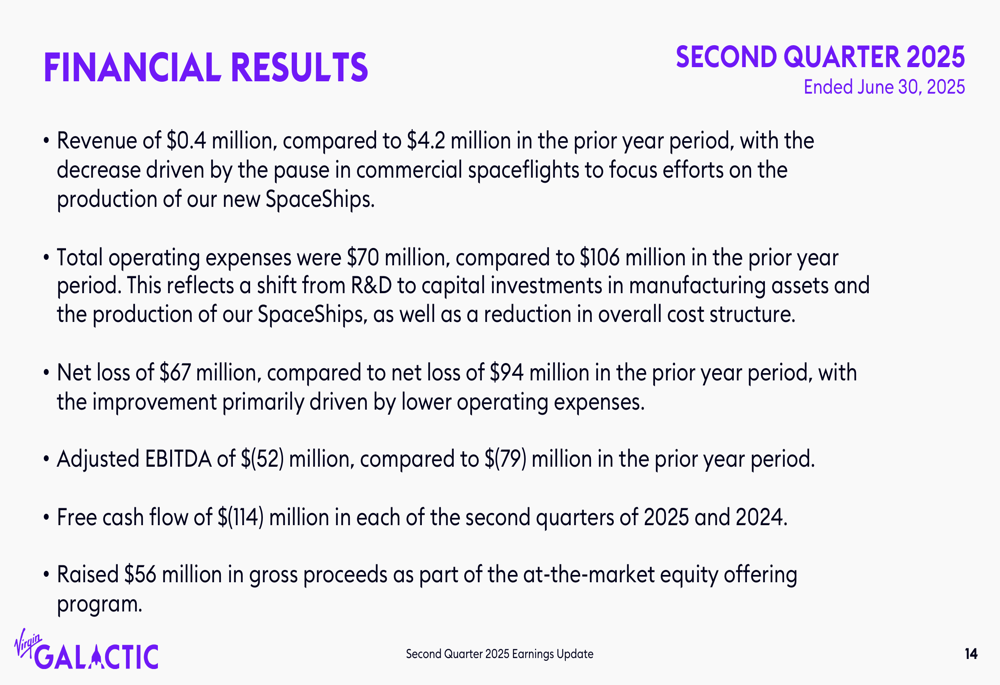
The company posted a net loss of $67 million for the quarter, an improvement from the $93.8 million loss in Q2 2024. Adjusted EBITDA also improved to $(52) million from $(79) million year-over-year. The company raised $56 million in gross proceeds during the quarter, helping to maintain its financial position.
Spaceship Development Progress
Virgin Galactic’s presentation emphasized its ongoing spacecraft development program, showcasing various components currently in production. The company is focusing on four key areas: rocket and propulsion systems, avionics and flight controls, mechanical systems, and carbon and metallic structures.
The presentation highlighted the company’s "We Build Spaceships" content series, which aims to increase brand awareness and showcase the technical expertise behind Virgin Galactic’s operations:

The company provided detailed updates on its manufacturing progress, including images of rocket systems, avionics, mechanical components, and structural elements of its next-generation spacecraft. Virgin Galactic is also developing its "LV-X" Launch Vehicle Program, which will be essential for future spaceflight operations.
Financial Analysis
Virgin Galactic’s cash position stood at $508 million as of June 30, 2025, including $30 million in restricted cash. This represents a decrease from the $567 million reported at the end of Q1 2025, reflecting the company’s continued cash burn as it invests in spacecraft development.
The following chart illustrates the company’s current cash position:
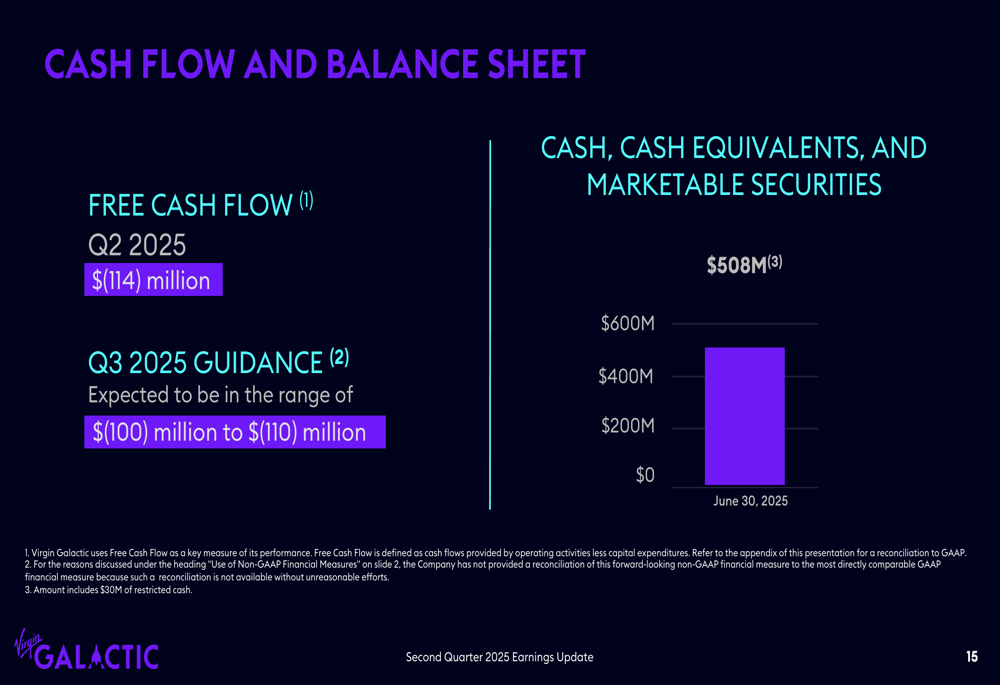
Free cash flow for Q2 2025 was negative $114 million, consistent with the company’s guidance and similar to the $113.5 million negative free cash flow in the same period last year. For Q3 2025, Virgin Galactic expects free cash flow to be between negative $100 million and $110 million, suggesting a slight improvement in cash burn rate.
A detailed breakdown of the company’s non-GAAP financial measures provides additional insight into its financial performance:
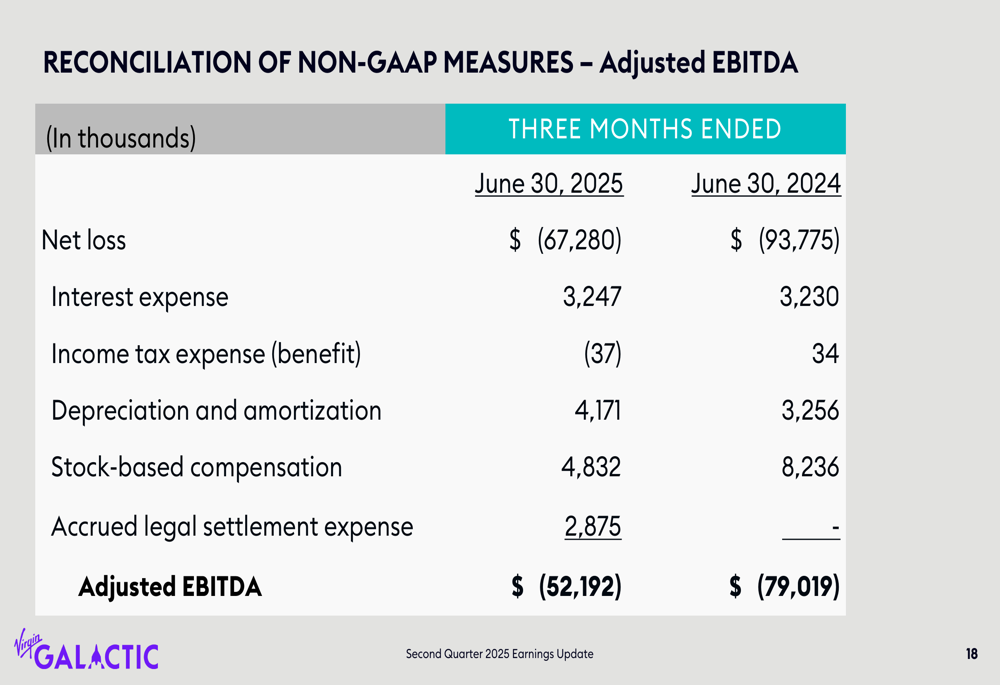
The reconciliation of free cash flow further illustrates the company’s financial position:
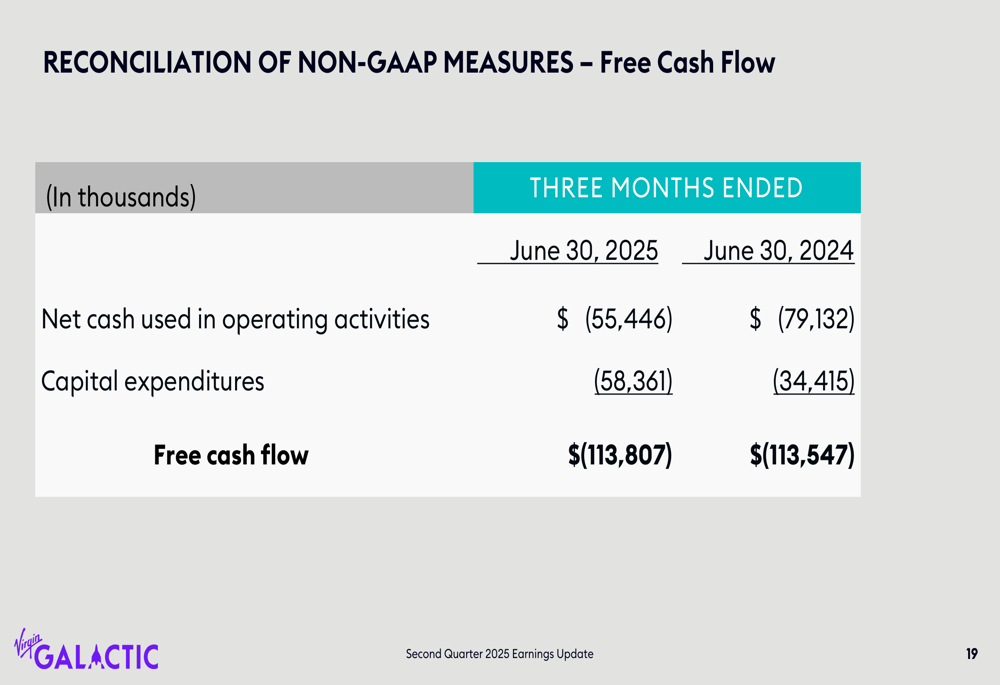
Future Outlook & Guidance
Virgin Galactic presented an optimistic long-term financial outlook based on fleet expansion. The company projects that increasing its operational spacecraft from two to four, along with additional launch vehicles, could approximately double annual revenue from $450 million to $990 million while quadrupling Adjusted EBITDA from $90-115 million to $450-500 million.
The following table demonstrates the projected economies of scale:
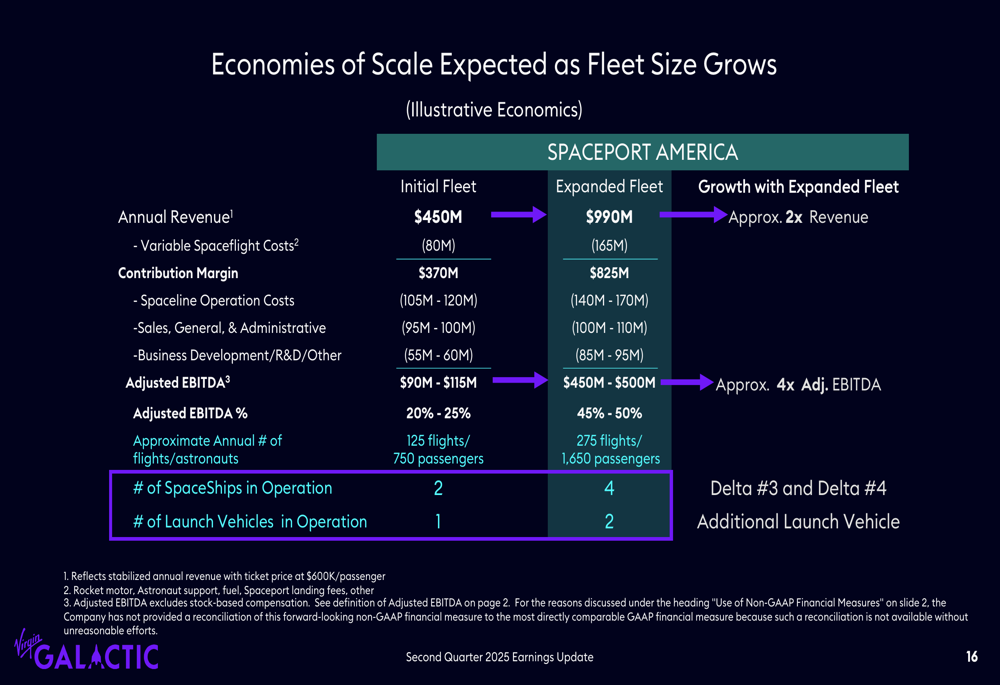
These projections assume a ticket price of $600,000 per passenger and an increase in annual flights from 125 to 275, serving 1,650 astronauts annually with the expanded fleet compared to 750 with the initial fleet.
Based on previous earnings information, Virgin Galactic is targeting its first research spaceflight for summer 2026, with a focus on reducing quarterly spending to below $100 million by Q4 2025. The company’s current trajectory aligns with these goals, as evidenced by the continued reduction in operating expenses.
While Virgin Galactic faces significant challenges, including sustained negative cash flow and reduced revenue, its strategic focus on spacecraft development and long-term scaling of operations represents its path toward potential profitability in the emerging space tourism industry.
Full presentation:
This article was generated with the support of AI and reviewed by an editor. For more information see our T&C.
